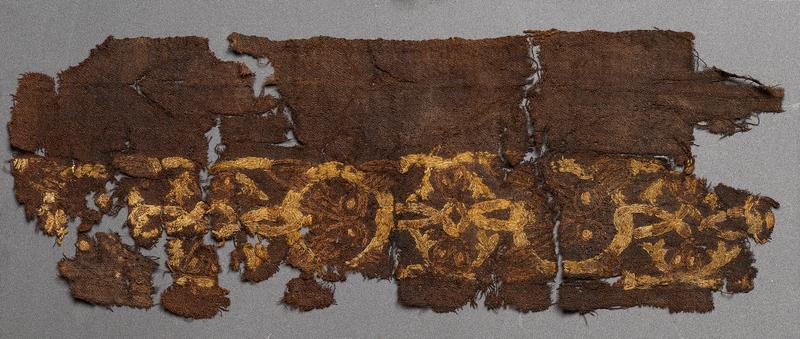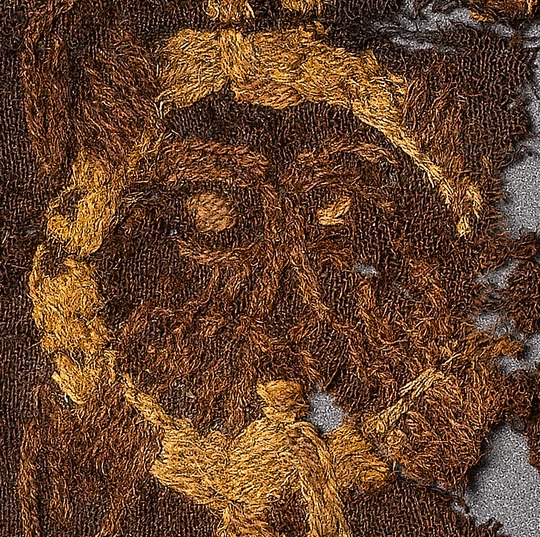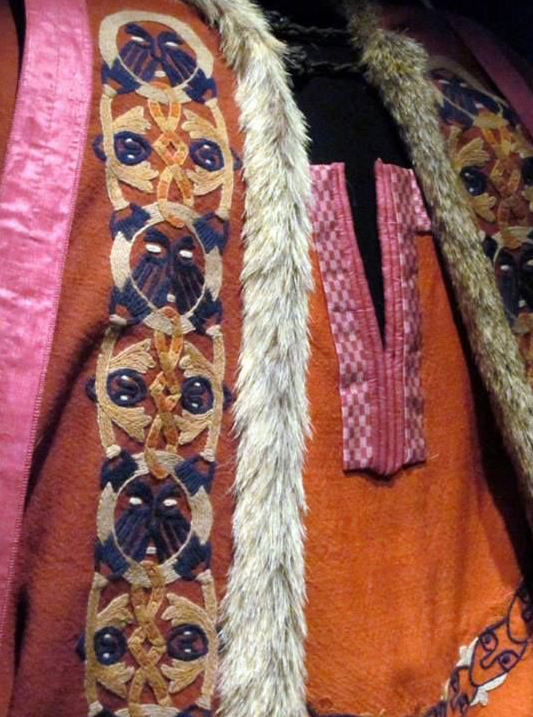What did Viking clothes and outfits look like? A large grant supports archaeologists and textile researchers exploring and recreating authentic textiles and dresses

Recently, a group of researchers have begun exploring what clothes and textiles looked like in the Viking Age and how they were worn. Part of the project is to reconstruct a man’s and a woman’s outfit. Another part of the project is to examine how people from all sorts of layers of society looked like.
The research project, Fashioning the Viking Age, is funded by the Velux Foundation with a grant of 5.5 million kroner and headed by senior researcher Ulla Mannering from the National Museum in Copenhagen in collaboration with Sagnlandet Lejre and the Center for Textile Research at the University of Copenhagen.
From fragments to full dresses

Occasionally, archaeologists discover small pieces of textiles and fur attached to metal objects found in graves. Sometimes, they even find larger pieces as part of excavations. The question, however, is how to reconstruct the complete outfits from these tiny rags
“It’s not easy to jump from small pieces of fabrics a full suit. It’s a puzzle game of small centimetres of textiles, images, and written sources,” explains Ulla Mannering, Project Manager on the research project and senior researcher at the National Museum to historie-online.dk
For instance, iconic pieces found in many female graves are the bossed oval brooches, which were used to hold up suspended dresses. But from images, we know that women might also wear blouses and skirts
“It is important to utilized a wide variety of different sources to find the breadth and variation of the Viking era dress. Much of our knowledge is based on archaeological findings from a few very rich graves,” explains Ulla Mannering.
A Practical Purpose

The team at the National Museum will not work alone. As part of the project, the researchers intend to reconstruct two outfits from the Viking age in collaboration with Sagnlandet Lejre and the Center for Textile Research at the University of Copenhagen. One is the outfit found in the Mammen grave, the other, the woman’s dress from Hvilehøj. Before they start, they intend to explore in detail which tools and materials the Vikings used, and which colours the outfits had. Both graves were high-status and probably linked to the elite surrounding the Jelling Dynasty. For instance, the burial of the Hvilehøj Woman yielded not only woven bands, but also four different fragments of silk, and six different fragments of wool as well as fur. The outfit of the man from Mammen sported a series of embroideries, depicting an acanthus vine, birds, gripping beasts, a leopard, as well as different types of masks. This particular outfit was reconstructed in the late 20thcentury based on the clothes, which King Cnut the Great wore in an illumination from Winchester… However, the new project plans to rethink this reconstruction, basing it on a new study of the fragments from the grave excavated in 1868 respectively 1880. The textiles, though, were carefully drawn preserving details since lost. Linen, wool and silk, but also gold and silver were used in such outfits.
“We want to reproduce the textiles and reconstruct the outfits of these two graves using as best we can, using the ancient tools, techniques, and methods,” says Ulla Mannering.
The aim is to “develop a new approach to disseminate textile, skin and clothing design to be used for exhibitions, teaching and in popular visualisations of the multifaceted life in the Viking Age. The project will give Danish textile research a renewed focus and impact, but will first and foremost result in a new visual and tactile understanding of textile production and clothing in the Viking Age that can be used in museums, in research, and by the broad public.
The intention is thus to provide as closely as possible, re-enactors and museums with scientifically correct reproductions to be used in Sagnlandet as well as in the future Viking exhibition, currently being planned at the National Museum in Copenhagen. But also to inspire reenactors and living historians to be authentic, when recreating the fashion of the Vikings.
SOURCE:
Vikingetiden bliver klædt på.
Historie-Online.dk
Fashioning the Viking Age – a new research project
READ MORE:
Vikinger i Uld og Guld. Om de danske vikingetidsdragter, baseret på tekstilfund i grave.
By Charlotte Rimstad. MA, University of Copenhagen
Denmark- Europe: Dress and Fashion in Denmark’s Viking Age.
By Anne Hedeager Krag
Northern Archaeological Textiles: NESAT VII: Textile Symposium in Edinburgh, 5th-7th May, Ed. by Frances Pritchard and John Peter Wild.
Oxbow 1999
The post Well-dressed in the Viking Age appeared first on Medieval Histories.
Powered by WPeMatico